Program is a patriotic salute to the U.S.A’s historic ability to “survive and thrive.”
“The more you know about our past, the more you will appreciate the country.” – Brian Kilmeade
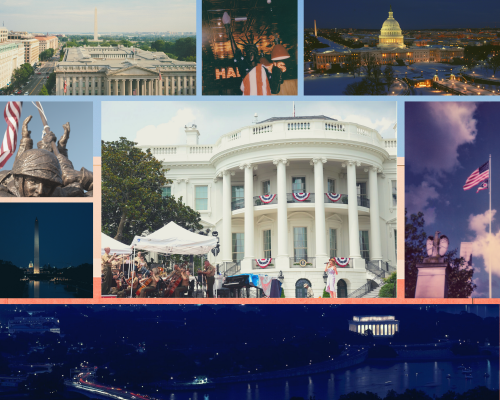
Official White House Photo (center) by Keegan Barber
Independence Day this year will certainly be something different. With the usual family reunions, barbecues and picnics put on hold, perhaps the best way to celebrate national pride is not in the traditional activities we may or may not get up to this year, but a look back at the country’s history of struggle and resilience.
Enter “What Made America Great,” an American history program hosted by Brian Kilmeade, TV and radio presenter for Fox News. A historical exploration of America through its landmarks, Kilmeade’s cross-country tour has its starting point in the capital, in the District streets and the White House rooms that have witnessed the most dramatic turning points of our national history. Interviews with experts and historians reveal the historical secrets hidden within the mortar and stone of iconic monuments.
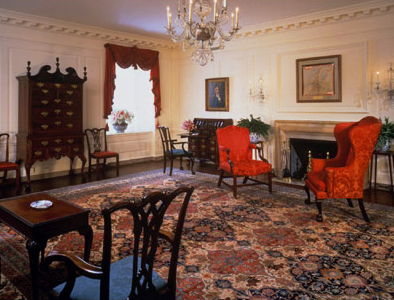
The White House Map Room, a stop on Kilmeade’s tour of the President’s residence
Through those interviews, viewers hear stories that embody the perseverance of America’s movers and shakers: a look at the White House Map Room and an accompanying tale of FDR in World War II, or a trip to the prisons in which leading suffragettes were imprisoned for their activism. As the program shows, it’s the unchanging physical structures and instantly recognizable facades which have transcended decades (and centuries) that are a special window into American values over time and the moments that made it what it is today.
We talked to Kilmeade about the inspiration for and goal of “What Made America Great,” available on the streaming service FOX Nation, and some of the interesting tales he’s picked up along the way. “What Made America Great” is ultimately something romantic to consider about the history of the nation, the District and its notable residents. Certainly, it is an optimistic reminiscence for those at a loss for how to celebrate this Independence Day, amid the unique circumstances and upheaval presently felt. Though as Kilmeade hopes to reassure — “America always finds a way to survive and thrive.”
WL: Tell me about the inspiration for the program. It sounds like there’s a relation to the President’s slogan “Make America Great Again.” What’s the connection there?
Kilmeade: The idea for the series really came from the executives at FOX Nation. They knew I had a passion for history and was about to publish my fourth history book, “Sam Houston and the Alamo Avengers.” A relatable series for the platform on American History would be a perfect fit.
As for the name, it just seemed to work as we spotlight locations that made America great.
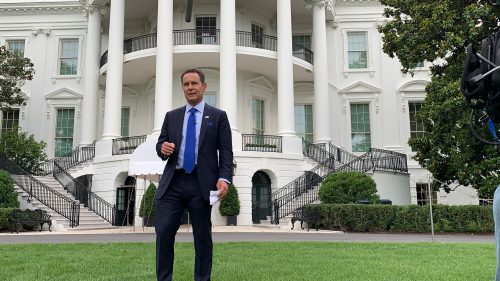
WL: The season opens at the White House. Why was this the natural starting point for the series?
Kilmeade: Well, we have been trying to get an episode at the White House for over a year and it finally came together last week. The White House really tells the story of American progress better than any other because each President lived there except for George Washington. However, he helped design it and its expansion mirrors America’s growth.
WL: What’s a little-known fact about the history of the White House that you discovered?
Kilmeade: So many little known facts, but here’s a few: Union troops recovered from injuries and battle fatigue inside the House. 1948-The entire building was about to crash in on itself until Harry Truman asked engineers to take a look. They not only told him it needed repair, they said entering even one more time would be too dangerous. He commissioned the rebuild where the only thing remaining was the outside walls. One more thing, you can find the burn marks on the original breeze way by the bowling alley from the burning by the British in 1814.
WL: The second episode in D.C. explores the hard-fought struggle for women’s suffrage as we approach the 100th anniversary of the ratification of the 19th Amendment. What surprised you about the history of the movement? Do you find any connection to social movements today?
Kilmeade: Well, stunning to think that woman had to wait so long just for the right to vote. Also that woman went to jail because they would not take “NO” for an answer. I am in awe of the fortitude and strength shown to get something they deserved at birth.
WL: What is the most obscure but fascinating story you’ve heard from your special guests or experts?
Kilmeade: We went to the prison in which the women were held. One extraordinary moment sticks out, revolved around a true American hero Lucy Burns. November 14, 1917—Night of Terror. At the Occoquan Workhouse, Superintendent Whitaker and dozens of his guards beat the women. Lucy Burns is strapped with her hands tied behind her onto a greasy pole. She’s suspended there all night. Her arms are almost severed from her arm sockets. They threw women into their cells with no lights. One woman is thrown into a cell and didn’t move, leading others to believe she is dead (she isn’t). They are kicked and beaten.
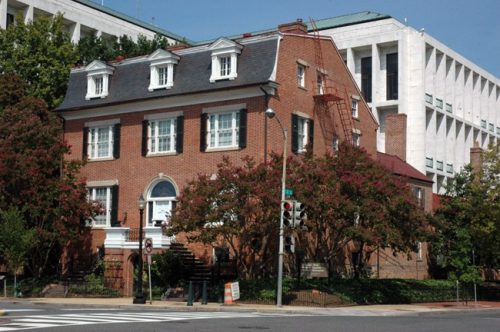
Former headquarters of the National Women’s Party, featured in the second episode | NPS Photo
WL: What does it mean in this series for America to be “great”?
Kilmeade: I believe we start the series from a place which I truly believe we are as a nation, GREAT. Not perfect, but great. We were a land of opportunity, freedom, and liberty. We don’t guarantee success but the opportunity for happiness, success and failure. Certain moments stand out along the way, certain people stand out above the rest, these are the subjects we focus on.
WL: You travel to several iconic landmarks (the White House, the former headquarters of the National Women’s Party, the prison where the women leading the suffrage movement were held and more). How do you navigate the complicated and sometimes controversial histories of some of these landmarks?
Kilmeade: We deal with the negative elements of our history directly. Yes, we imprisoned women solely because they insisted on voting, we cover it. Andrew Jackson had slaves, we go to the slave headquarters. Thomas Jefferson may have been the most intelligent American but he also had slaves and we went to the network for slave homes, even speaking with a Hemmings descendent!
“I believe we start the series from a place which I truly believe we are as a nation, GREAT. Not perfect, but great. We were a land of opportunity, freedom, and liberty. We don’t guarantee success but opportunity for happiness, success and failure.” – Brian Kilmeade
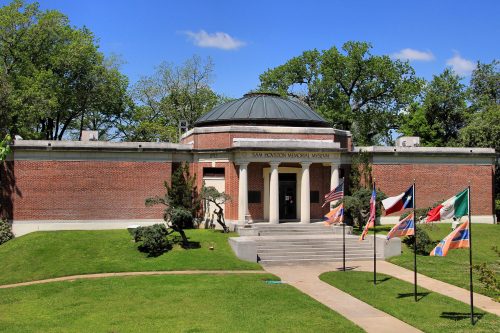
Sam Houston Memorial Museum in Huntsville, TX, another stop on the tour | Larry D. Moore CC BY-SA 3.0
WL: The season sets out to reveal some “hidden histories.” How might these lesser-known stories you gather be relevant to us today? What should we do with this information?
Kilmeade: I also believe the more you know about our past, the more you will appreciate the country. These great figures were not perfect, like everyone else, which I think makes them more relatable and understandable. Sam Houston’s political battles could be torn from today’s news and like us at times his kids and his office mates don’t listen to him. The White House has countless hidden stories that Truman heard Ghosts, Teddy Roosevelt boxed in a basement and in the tour of the house you see the entire history of the country. How can you not appreciate the country more?
WL: The show delves into the moments in history that “made America great.” Some have argued, especially at this moment, that America has been or is great only for some groups of people and not others — Black, Indigenous and other people of color, the LGBTQ community, etc. How do you address that argument in the series?
Kilmeade: We are a great country, a human all-star team, pro bowl to use a football analogy. Compare other countries to America, the majesty, the opportunity, the freedom. Everyone has something to overcome but there is a uniqueness to a country which has at its foundation a system which allows people the opportunity to succeed however you define it. If you are an American Indian you might have a different view but one hundred plus years later there are laws to make sure you have an even shot. For African Americans, the obstacles remain in some circles but the opportunities are plentiful.
Prime examples of how America is not perfect but no country tries harder to live up to its charter and Constitution. We have freed more people than any nation in history and currently are the number one military and economic power in the world.
“These great figures were not perfect, like everyone else, which I think makes them more relatable and understandable.” – Brian Kilmeade
WL: What do you hope viewers take away from this season?
Kilmeade: I just hope the viewer learns something and feels the excitement I felt when I did the story. I hope our viewers love their country a little more and perhaps decide to visit and experience the places we did.
WL: So what’s the answer… what made America great?
Kilmeade: Everything collectively makes America great. We should not have won our freedom from the British in the Revolution.
We should not have survived the War of 1812. The Texans should not have defeated Santa Ana at San Jacinto. And after 600k deaths we should not have been able to come back together after the Civil War, but we did! America always finds a way to survive and thrive.




